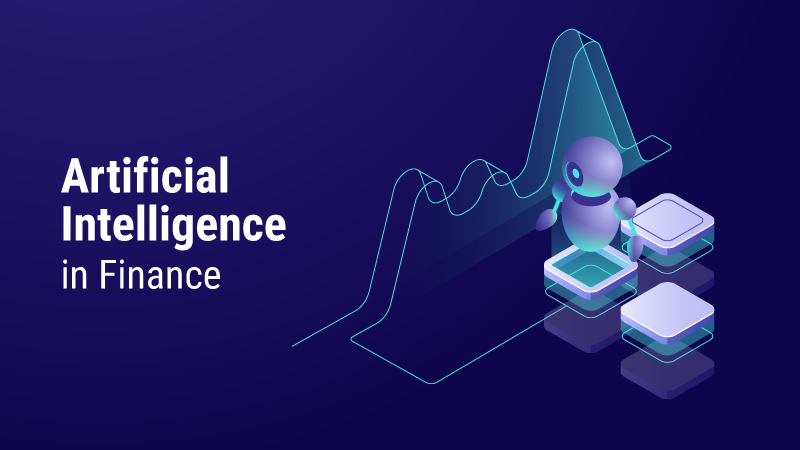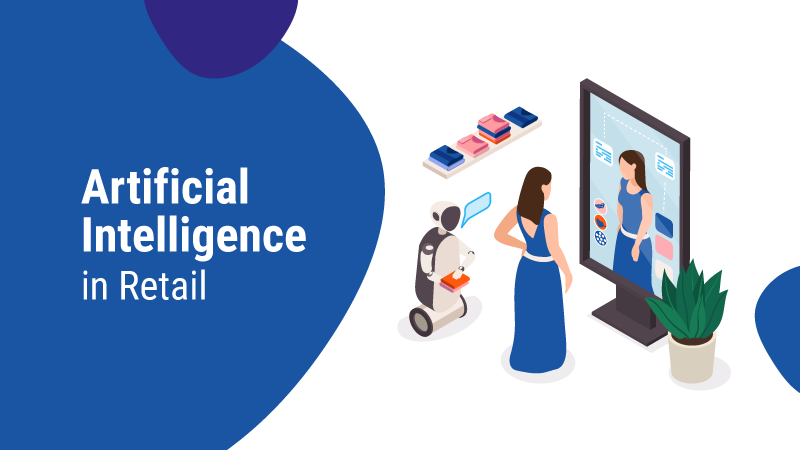Artificial Intelligence in Finance

Artificial Intelligence (AI) in finance indicates the use of financial software developed by an artificial intelligence company using machine learning algorithms that enable financial institutions to automate day-to-day operations. New approaches have been taken up to optimize AI business operations in the financial sector and avoid security issues, thereby increasing the confidence of customers in financial institutions. The application of artificial intelligence in the financial sector has provided customers with a safe and smooth way to save, spend, and handle their money.
Financial professionals and clients are more likely to have frequent AI encounters, as most common service-related problems are managed or solved to some extent through automation powered by artificial intelligence solutions. The chances for an acceleration in this trend are high as it has to meet the growing customer demand to offer a quick, convenient, and safer financial experience.
Applications of AI in Finance
There are many ways through which artificial intelligence is leveraged with finance or financial institutions. Let us talk about some of the challenges addressed by AI when implemented properly in the financial sector. Below are some of the main use cases or major challenges addressed by artificial intelligence in the financial sector.
Risk management
Emphasis is placed on appropriate risk assessment in the financial sector as risks can be devastating to any financial institution. Prompt and accurate predictions related to possible threats are the crucial factor responsible for maintaining the safety of financial institutions. Human employees can make mistakes as they may not pay attention to potential risks that might cost the business a lot. In such cases, the chances of a machine learning model going wrong are very low as they are constantly learning from a large dataset to make precise decisions.
In addition to helping with decision-making, these models aid in automating the whole process, thus saving time. Considering anomalous data while evaluating and managing risks is very challenging for human employees. AI’s ability to navigate through huge volumes of unstructured and structured data makes it possible to make precise and prompt predictions about potential risks. It enables financial institutions to actively work in order to eliminate the possible losses that come with the risks.
Fraud Prevention
With the world transforming from liquid cash to digital money for almost every activity ranging from shopping to bill payments using a smartphone, financial institutions have become more vulnerable to fraudulent activities. The digitization of such financial activities has resulted in the emergence of cybercrimes including security attacks. These institutions have specialized departments for detecting and preventing fraud and they also invest huge resources in such departments. Any negligence cannot be welcomed there when all activities are closely monitored to ensure transparency.
Artificial intelligence plays a crucial role in detecting strange behaviors, thereby ensuring the safety of transactions conducted online. This is because the AI finance system analyzes the scale of previous transactions and alerts the system in case of any unusual transactions. For instance, when a user uses a card from one geographical location and a strange amount is withdrawn using the same card from another location within a few minutes, it is identified as unusual activity. Such suspicious transactions are noted because of the previous history of the user that reveals he/she can’t reach a geographical location in a matter of minutes. As AI finance systems are constantly learning from each activity of the user it is possible for them to recognize an activity even if a normal and authentic transaction is taking place.
Digitizing paper records
There is a huge volume of historical data in financial institutions, especially in the form of paper documents. Since the records are prone to damage or losses and are chaotic in nature, they have been stored in drawers, shelves, cabinets, or in other storage spaces. Manual digitization of such paper records is a challenging task, especially if the organization has been in business for a long period of time. The combination of all these components requires a step to digitize all paper documents for ease of use.
AI always relies on historical or previous data during training in order to make effective decisions. Artificial intelligence also helps in digitizing these paper documents rather than entering the data manually, thus enabling the employees to scan and upload the document to the software. These AI-driven software packages can obtain every piece of information from the document as they are trained to identify the characters in the document. OCR (Optical Character Recognition) and ICR (Intelligent Character Recognition) are 2 such A-driven technologies.
Automated Financial advisory
As the financial industry is leveraged with Artificial Intelligence, we are witnessing the proliferation of Robo-advisors. These Robo-advisors use AI and machine learning algorithms to deliver financial advice to clients with least or no human intervention. The robot advisor uses an online survey to collect data in order to analyze the financial status and future goals of the clients. This data is later used to provide financial advice to clients. In addition, this Robo-advisor helps clients save their time and money as it delivers precise and data-driven advice. It also allows the integration of human intelligence with AI to provide the best financial advice with future insights.
Insurance claim automation
AI chatbots and AI-driven software facilitate the automation of the insurance claim process and minimize the risk associated with overpayment. There is an internal mechanism within the insurance companies to process these claims, but this may take a long time as there are many people claiming their insurance. In addition to this sluggish insurance claim process, too many claims can make it difficult for insurance companies to identify important patterns in claim data.
AI-induced systems can easily manage the claim process by minimizing the amount of time it takes to identify patterns and process each claim. Many organizations have started developing software and chatbots for insurance companies that utilize the features of AI and predictive analysis to minimize the occurrence of overpayments. Moreover, AI-driven software can identify inaccuracies in an insurance company’s payment behavior based on previous data.
Wrap Up
Modern finance has started implementing Artificial Intelligence for diverse uses. Though the influence of AI has universally affected many sectors and industries, the financial industry is considered to be one of the earliest sectors to embrace this amazing technology. It is the best example of one of the most benefitted or profited sectors because of AI. Therefore, many large financial institutions are investing a good share of their resources in AI due to the undeniable benefits it offers. Since the financial industry is one of the core industries that many businesses rely on, this prompts many organizations and industries to take up artificial intelligence for their benefit.
Read more about AI
- Artificial Intelligence in E-commerce
- 7 Real-World Applications of Deep Learning
- Artificial Intelligence in Marketing
- Artificial Intelligence in Banking
- Artificial Intelligence in Everyday Life
- Artificial Intelligence in Insurance
- Artificial Intelligence in Transportation
- Artificial Intelligence in Fintech
- Artificial Intelligence in Cyber Security
- Artificial Intelligence in Logistics
- Artificial Intelligence in Manufacturing
Blogs by Category
AppForms Artificial Intelligence Blockchain Call Centers Chatbots Cloud Computing Data Management Design Digital Marketing Digital Transformation Enterprise Applications FinTech Insights LowCode Development Microsoft Mobile Apps News Office 365 Robotic Process Automation Security SharePoint Software Development Web ApplicationArtificial Intelligence in Retail

2024-05-23 14:12:28